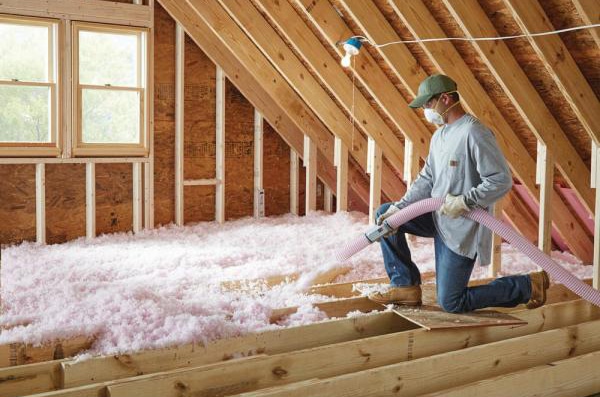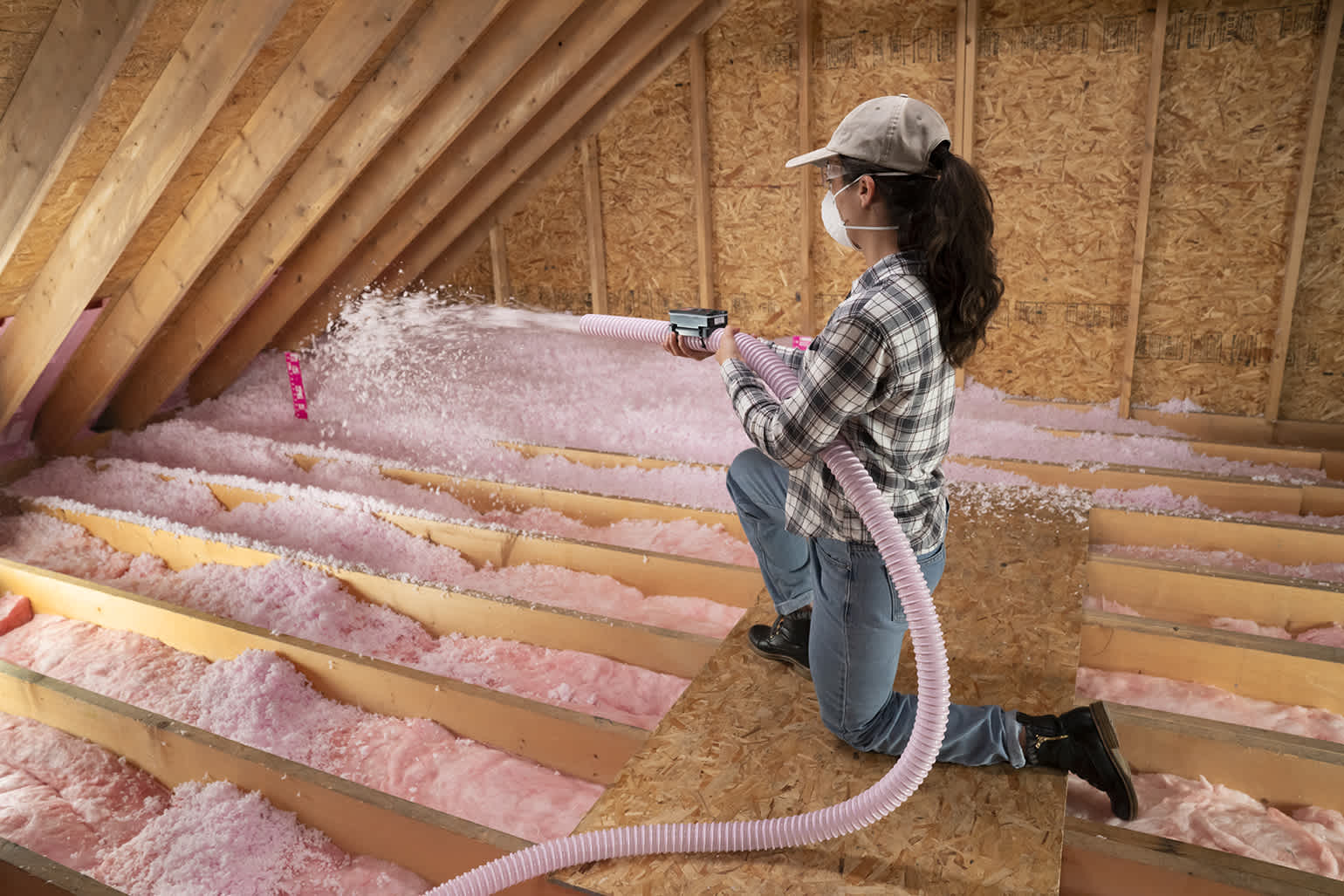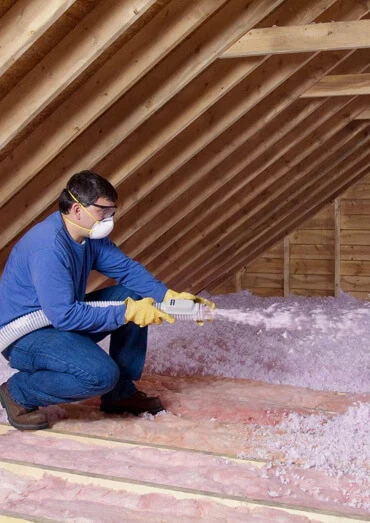Leading Benefits of Upgrading Attic Insulation DFW for Your Home Convenience
Discover the Various Kinds Of Attic Insulation and Their Unique Benefits for Your Home's Power Performance

Fiberglass Insulation
Fiberglass insulation is among the most frequently used products for attic room insulation as a result of its outstanding thermal performance and cost-effectiveness. Composed of little glass fibers, this material effectively catches air, creating a shielding barrier that helps keep consistent indoor temperature levels. Its high R-value per inch makes it particularly efficient at standing up to warmth transfer, which is critical for energy conservation in homes.
Installation of fiberglass insulation is fairly uncomplicated, commonly offered in batts or loose-fill kinds, accommodating different attic room setups. In addition, it is resistant and non-combustible to wetness, minimizing the risk of mold development. This toughness adds to its longevity, making fiberglass a viable long-term investment for home owners.
Additionally, fiberglass insulation is often manufactured from recycled materials, which boosts its eco-friendliness. The product can also contribute to soundproofing, decreasing noise transfer between rooms. While it is important to wear protective gear during installment to prevent irritation from the fibers, the general benefits of fiberglass insulation, including power financial savings and environmental considerations, make it a popular selection for improving attic performance and advertising a comfy living atmosphere.
Spray Foam Insulation
Spray foam insulation is a very effective option for attic insulation, recognized for its remarkable air sealing and thermal performance. This innovative insulation product is made up of a mix of isocyanate and polyol resin, which, when combined, increases quickly to load spaces and cavities in the attic area. Its capacity to follow various surfaces makes certain a continual barrier against air leaks, significantly decreasing heat loss throughout cooler months and warm gain during warmer seasons.
Among the vital benefits of spray foam insulation is its high R-value per inch, which means it supplies excellent thermal resistance in a relatively slim application. This is particularly useful in attics where room is commonly restricted. In addition, spray foam can aid minimize dampness accumulation, lowering the risk of mold and mildew and mildew development, which can be detrimental to both the structure and interior air high quality.
While the preliminary expense of spray foam insulation might be more than conventional alternatives, its long-lasting power savings, paired with boosted convenience and enhanced home value, make it a rewarding investment for homeowners seeking boosted energy efficiency. Attic Insulation DFW. In general, spray foam insulation attracts attention as an effective solution for enhancing attic room insulation
Cellulose Insulation

Cellulose insulation is a preferred option for attic insulation, mostly made up of recycled paper products treated with fire resistants. This eco-friendly alternative is recognized for its superb thermal performance, effectively decreasing warmth transfer in both summertime and cold weather. The thick make-up of cellulose allows it to load gaps and voids in attic room areas, offering a smooth barrier against air leakages.
Among the significant advantages of cellulose insulation is its capacity to stand up to mold and bugs, owing to the fire resistant treatments made use of during manufacturing. Furthermore, it boasts a high R-value per inch, which equates into exceptional energy effectiveness. House owners can expect reduced heating & cooling expenses as an outcome of enhanced insulation.
Installation is generally completed through blowing loose cellulose into the preferred area, enabling for a quick and reliable process. This method also minimizes interruption to the existing structure. Cellulose insulation has a fairly reduced ecological effect, as its production procedure makes use of recycled products, contributing to sustainable structure techniques.
Rock Woollen Insulation
Amongst the different options for attic room insulation, rock woollen, also referred to as mineral woollen, attracts attention due to its outstanding thermal and acoustic performance. Made from recycled or all-natural products, rock wool is produced by thawing rock and rotating it into fibers, resulting in an item that provides outstanding insulation buildings.
One of the substantial advantages of rock wool insulation is its high R-value, which indicates its performance in withstanding heat flow. This characteristic not only enhances energy effectiveness but additionally adds to keeping a comfy indoor temperature year-round. In addition, rock wool is inherently fire-resistant, making it a much safer option for homes as it can endure high temperature levels without melting or releasing poisonous fumes.
In addition, rock wool insulation succeeds in soundproofing capabilities, successfully lowering noise transmission in between spaces and from outside resources. This makes it an optimal choice for house owners looking for a peaceful living environment. In addition, rock woollen is moisture-resistant, aiding to prevent mold growth and preserving the structural honesty of the attic room. On the whole, rock wool insulation provides an extensive solution for enhancing energy performance, safety and security, and comfort in domestic settings.
Radiant Obstacle Insulation
Glowing obstacle insulation functions as an efficient option for reducing warm transfer you can check here in attics, specifically in warmer environments. This type of insulation jobs by showing radiant heat far from living rooms, thus decreasing the amount of warm that enters a home throughout heat - Attic Insulation DFW. Normally made up of an Visit Website extremely reflective material, such as light weight aluminum foil, glowing obstacles are installed in attic rooms, facing the roof, where they can intercept incoming heat from the sun
The primary advantage of glowing obstacle insulation is its capability to reduced air conditioning expenses. By reflecting heat rather than absorbing it, glowing obstacles can assist keep a more steady indoor temperature level, decreasing the workload on cooling systems. This effectiveness translates into lower power bills and raised convenience for property owners.
In addition to energy savings, radiant obstacles can also add to improved interior air top quality. By reducing warm buildup, they aid decrease humidity levels, which can avoid mold and mildew growth and improve overall air flow. When mounted appropriately, glowing barrier insulation can be an indispensable addition to any kind of energy-efficient home, making it a worthy consideration for homeowners seeking to improve their look at this web-site attic room insulation technique.
Conclusion
To conclude, comprehending the various sorts of attic insulation-- fiberglass, spray foam, cellulose, rock wool, and glowing barriers-- allows house owners to make informed decisions relating to energy performance. Each insulation kind offers special benefits, such as remarkable thermal resistance, moisture monitoring, and sound attenuation. By choosing the ideal insulation material, significant reductions in power costs can be accomplished, together with enhancements in interior convenience. Ultimately, the appropriate choice adds to a more lasting living setting and promotes total power conservation.

In conclusion, comprehending the various types of attic room insulation-- fiberglass, spray foam, cellulose, rock wool, and glowing barriers-- makes it possible for home owners to make informed choices pertaining to power efficiency.